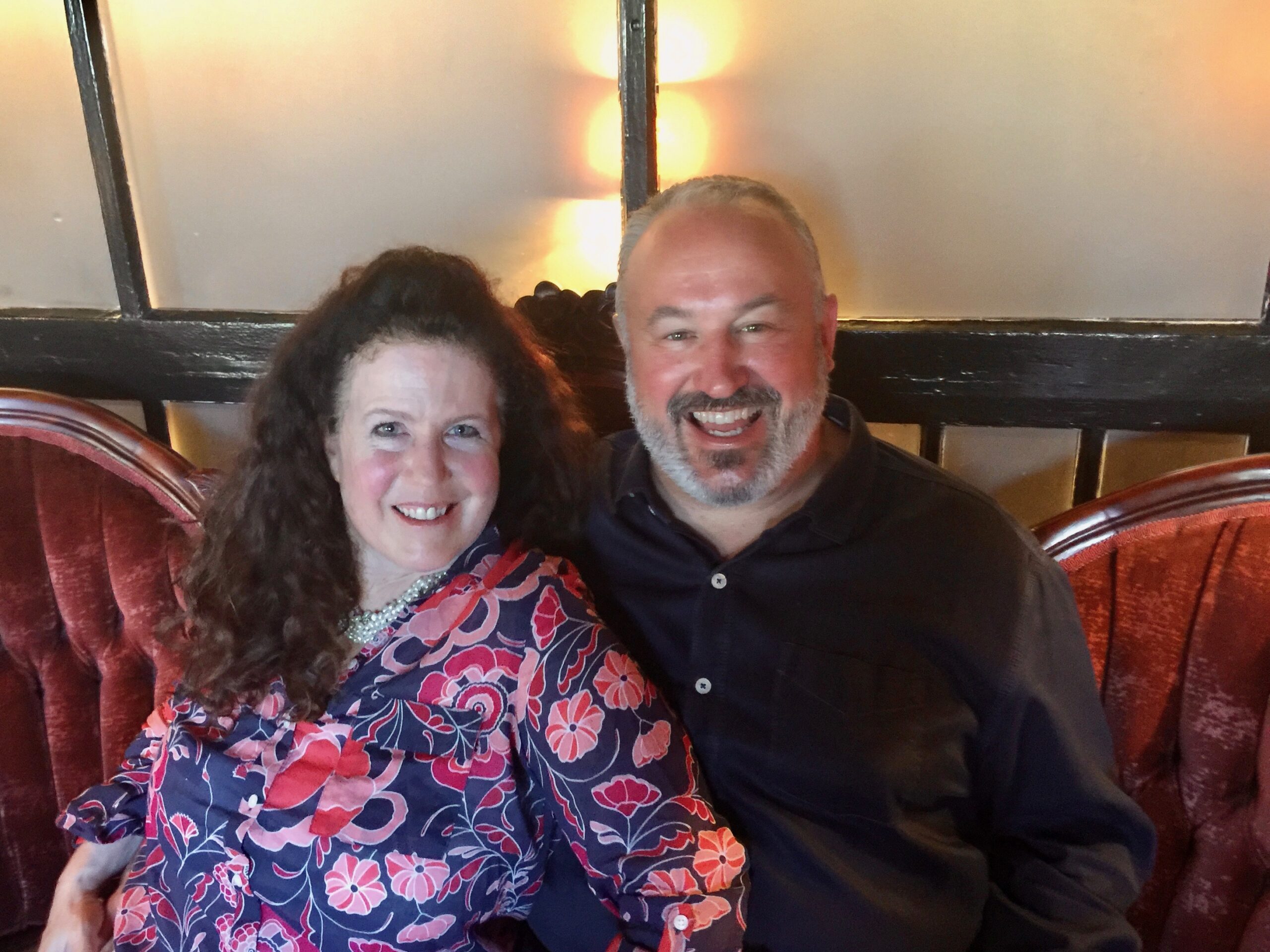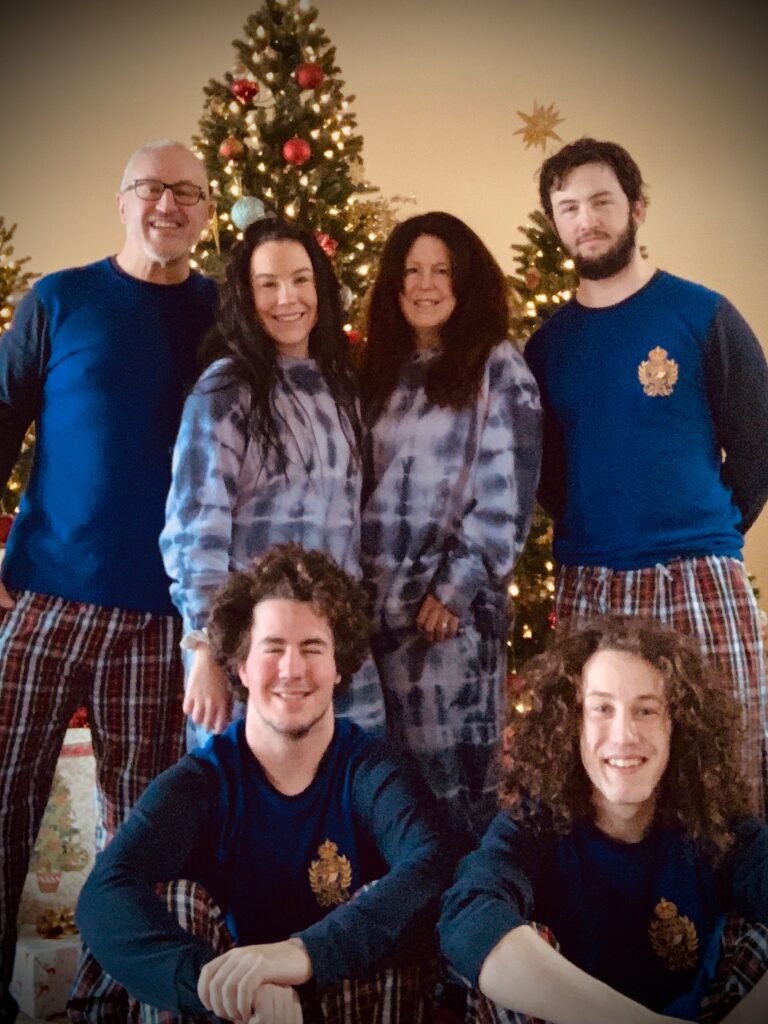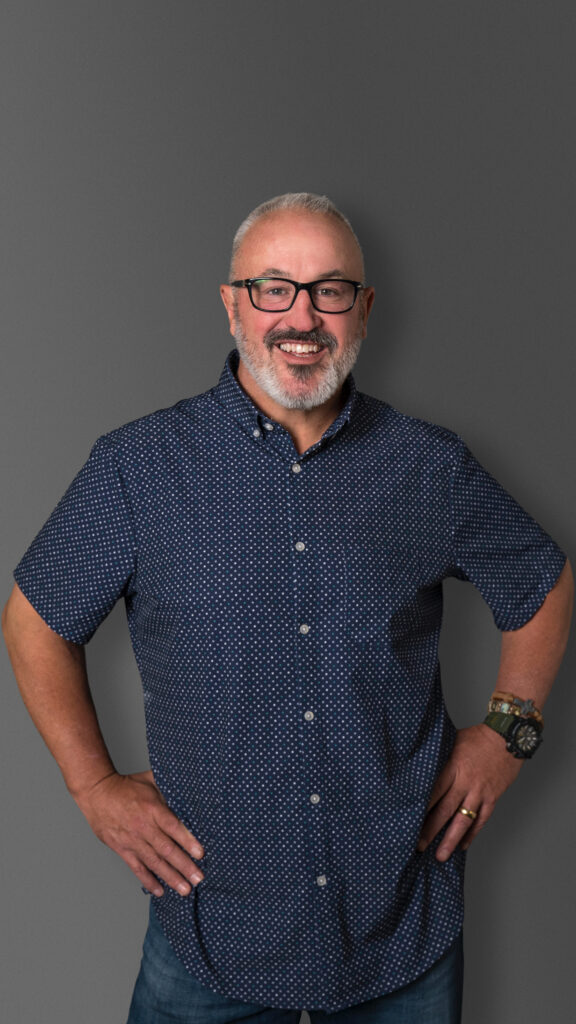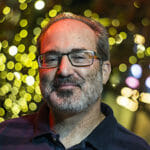From deadly cancer diagnosis to miracle recovery: How Pete Ernaut survived

The world is louder and funnier with Pete Ernaut in it.
The embodiment of boisterousness, his laugh infects everyone around him, his raconteur skills are second to none. When you walk into a room where he is, Ernaut is never just there; he is always THERE.
So as I listened to him on the phone, speaking in a rarely subdued voice and saying the words that are a blur now, I had to think about him not being there — ever again. “Leukemia…rare form….pray for me.”
This couldn’t be happening. If ever I have known anyone who seemed indestructible, his name is Pete Ernaut. He had been a walking advertisement for a “work hard, play hard” lifestyle: His tenacity during the day in campaigns or the legislative hallways was matched only by his ability in the evenings to drink all comers under the table, only to arise the next day, hung over, but ready to do it all again.
And, yet, here he was, confronting his own mortality at the age of 54, afflicted by cancer and with the odds against him. It was as if his singular voice had cried out in terror and was about to be silenced.
That was two years ago.
Today, Ernaut is not just alive, thanks to a bone-marrow transplant, but if the Legislature, which convened this week, were not meeting virtually, his laugh would be reverberating through the hallways as loudly as ever. His story of recovery is not just one of remarkable resilience, but of transformative change, in which a man who in his own words lived life with “the throttle wide open” — and who was a 300-pound accident waiting to happen and who is now operating in a lower (slightly, at least) gear, 60 pounds lighter — had to “get leukemia to get healthy.”
This is a journey he could not have made alone. Without his indomitable wife, Wendy, and a cadre of dedicated friends, not to mention a doctor who from the beginning believed he could beat the cancer, Ernaut might not — almost surely would not — be alive today. He also had a bit of luck along the way and his faith, deepened by this searing experience, helped sustain him.
This is a story of survival, one I find inspiring and one I relate not as some unbiased observer but as someone who has known Ernaut since the mid-1980s and as one who considers him a friend. I also have a unique perspective because I, too, have had a transplant, and I can relate to coming to terms with one’s mortality, with the fear that the transplant would not take, with the discovery (in my case) of faith and the unsettling feeling that for the rest of your life you will regularly wait for blood test results and hope nothing has gone wrong.
This tale does not have an end, just a new beginning.
---
Pete Ernaut awoke in Reno on Christmas morning 2018 with his back throbbing.
That wasn’t so unusual. He was not exactly in shape and carrying around all that weight would bring aches once in awhile. But the pain intensified during the day, so he decided to try to sleep it off.
The rest offered no respite from the discomfort, and now he had chest pains to boot. He decided to go to the ER. Later, he would think, “Thank God I had chest pains.”
Why? Because they took a blood panel, one that would change his life. The ER doctor told him bluntly that the blood tests indicated he had leukemia.
“First thing that crossed my mind is: that has to be wrong,” Ernaut recalled. “This can’t possibly be true. Then about 10 seconds later, what crossed my mind is, ‘You are going to die.’ The terror of this was not far behind.”
What happened next, as he remembers it, was “like a ride through the rapids.”
He was admitted to the hospital. A biopsy confirmed the diagnosis. He had a rare form of cancer – acute lymphoblastic leukemia. He gathered the people closest to him, including his second family at R&R Partners, and decided, in his words, “to find the best doctor that we can on the planet.”
With an assist from Larry Ruvo, the philanthropist who founded a brain health center in Las Vegas and was well-connected in the national medical community, Ernaut found Stephen Forman at the City of Hope in Southern California. By pure chance, a bed was available, so he hopped aboard a friend’s private plane and was there later that day.
(It’s worth pausing here to say I wondered if Ernaut had ever thought how privileged he is to have had access to Ruvo and then to City of Hope and the treatment that would come. He had no horror stories with his insurer, had high-ranking current and former elected officials come visit. So few people are so lucky – and he knows it. “I spent a lot of time with people (at City of Hope) who didn’t have that privilege,” Ernaut told me. “Their journey is way tougher.”)
Before he left Reno, Ernaut first had to experience what was “one of the most horrible things” he has had to do: Tell his kids.

“I had to tell them I had leukemia, and it’s bad and I did not know when I was coming back,” he said of his two high schoolers and two college-age children. “I spared them the possibility of saying ‘if” I am coming back. They were incredibly strong.”
Wendy did not go with him to City of Hope – she had to stay with the kids, hold the family together – but two of his close friends accompanied him.
And so began Ernaut’s rollercoaster stay in Southern California, one that would begin at the lowest point.
“When my friends left, I was in a hospital bed, I don’t know a soul and quite possibly have a terminal disease and was facing a regimen of terrible procedures,” he said. “That night, it was terrifying. There came a moment in the middle of that night, when I literally thought I was hallucinating. The path sort of came to me, one of faith, I just knew there was a higher presence in this, there was some purpose to all of this. I didn’t know where it was going to end, but I felt very strongly this was not going to end then or that way. That produced the foundation of strength, that I would just buckle down and say I’m going to do whatever it takes to live.”
Many of us have read or heard about such epiphanies, of people finding God during times of great distress. (I did not pray until I discovered I needed a transplant three and a half decades ago and have not stopped since.) And Ernaut, self-described “casual Catholic” before this trauma, later would take a pilgrimage to a tiny chapel in San Juan Capistrano dedicated to St. Peregrine, the patron saint for those afflicted with cancer. There he found what he called “a spiritual awakening, the moment from when I thought I was going to be OK to when I knew I was going to be OK.”
----
The rollercoaster picked up steam.
Ernaut began chemo, his back pain subsided, he had no side effects. Maybe his significant Jack Daniels imbibing had somehow provided a prophylactic. He had no nausea, his hair remained intact.
Having discovered his leukemia had a known genetic mutation, Forman could approach the treatment in a more laser-like fashion, telling Ernaut he would be in remission in 28 days.
He followed his doctor’s advice – and everyone should heed this when they are ill – and stayed off the Internet to learn more about his disease. And he saw day after day in the hospital just how lucky he was as he observed patients, some of them children or young adults, lose their battles with cancer.
Ernaut would take walks every day, his cart with his IVs and monitors strapped to him, and he would see families congregating in rooms, visiting their afflicted loved ones. Occasionally, he would see a coffee service tray outside a room, and it soon became a sign of the grim reaper as families and friends had come to say goodbye.
“Every time that coffee service came out, that’s what it meant,” he said. “Every time I’d walk through the hallways and see it, I’d have to black it out, say a prayer.”
He pushed forward, developing a packed daily regimen that prevented him from allowing his mind to wander to worst-case scenarios, the abyss. “I walked and I walked and I walked and I prayed,” he described it.
As Forman promised, 28 days later he was in remission. He had gone from 70 percent of his bone marrow being cancerous to only 1 percent. Now it was time to prepare for the transplant.
Wendy found him a place near the hospital, a sanctuary where he could live while he prepared his body for the operation. No relatives were close enough matches (I remember how lucky I was that my brother was a 100 percent tissue typing match).
There were hiccups – a donor pulled out, a trace of cancer was found. But on June 13, 2019, Ernaut received lifesaving bone marrow from a 27-year-old from Germany, and then…he waited. Ernaut, vivid as always, described it like “waiting for Apollo 13” to reappear.
“It’s an invading force,” he said, referring to the bone marrow. “Your body is conflicted, in crisis. They give you all kinds of meds to make sure your donor’s cells win the fight.”
I remember that after my kidney transplant, the fear of rejection, the horror that you might have to start all over again. I knew exactly how he felt.
----
You hear about life-changing events, and then you see one unfold before your eyes.
Nine months after his Christmas miracle – and that’s what it was, catching it early enough – Pete Ernaut returned to Reno. He was supposed to be in the hospital for 100 days; he was out in 18, and then three months in L.A. and he was headed home.
Before he left right before Labor Day, he had altered his diet, all but erased his drinking, worked out religiously and kept praying. A lot. He’s also in therapy.
Pete Ernaut living like a monk? This is something no one could have predicted.

“For me the blessing in all of this is God gave me a hard reset,” he told me. “The way I lived my life, the way that I thought about things. I got a do-over. I got to rethink how I wanted to live my life.”
It was, Ernaut said, “a deeply lonely journey. Family can be awesome. Mine was. Friends can be awesome. Mine were. But this is about you.”
During his time in California, Ernaut bought a travel trailer and after chemotherapy sessions, he drove up the coast. He wanted to be isolated, take in the beauty of that incomparable drive.
But there was more to it, too.
“If this went in the wrong direction, I didn’t want to die in a hospital or my house for my family’s sake,” he said. “That trailer was my escape pod. I was going on a trailer trip (if he was dying), and I wasn’t going back. The trailer was freedom — but it also (could have been) the end.”
He didn’t want to have to see what he had seen too many times already, what he called “the look.”
“The effect on others might have been the hardest thing on me,” he said. “When the people you love the most, and who love you the most, are terrified and overwhelmingly sad, they have an unmistakable ‘look.’ I think you can only see it when you are on the other side of the lens. I will never, ever forget that look.”
Nor does he ever want to see it again. Especially from his wife.
“I’m just sort of in awe of how strong she actually was and is,” he said. “Keeping the kids positive, focused on school and other things.”
Ernaut is back at work now, and when the Legislature opens, he will be a dominant, if thinner, presence. He has side effects from his meds – tear ducts stop working, he gets canker sores, some acne.
He gets tested tests every couple of months to ensure the cancer is gone, followed by an excruciating five days or so waiting for the results. (Only someone who has had cancer and/or a transplant can truly relate to this. The fear: It never goes away.)
“That’s my life,” he said last week. “But I don’t have cancer.”
